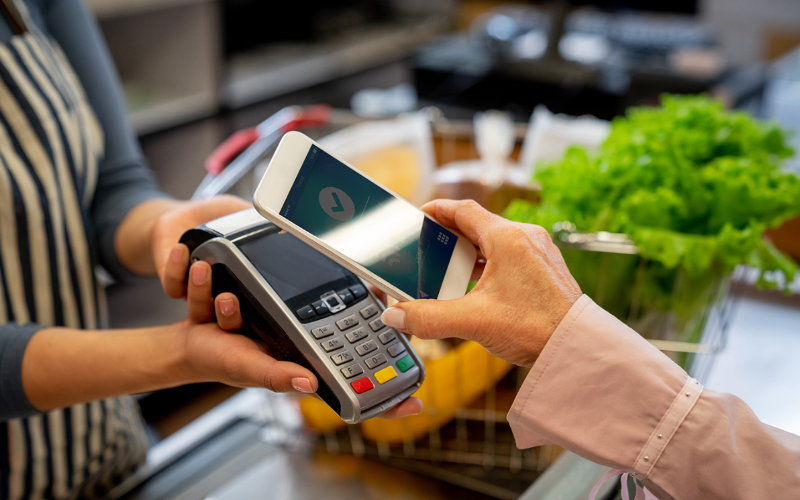Retail, CPG and Logistics
How Digitisation Delivers Customer Centricity in the CPG Industry
Digital advancement is opening up a direct-to-consumer model for the Consumer Packaged Goods (CPG) industry. Consumers can now interact with companies in innovative ways, which leads to endless choices in product and service delivery. For businesses, efforts to provide these choices come with inevitable competitive pressures to understand and meet the varying consumer needs effectively and efficiently each time.
To gain ground and maintain head start in digital advancement, CPG business leadership needs to overcome certain challenges of:
- Operating in a highly volatile and competitive market
- Managing multiple channels of delivery
- Continually innovating to offer tailored products and services
- Shortening the production and supply chain cycle
- Adopting smart technologies to aid real-time inventory management
- Leveraging advanced analytics for enhanced customer relations
For businesses, transitioning from product-centric to customer-centric solutions is no longer a nice-to-have option, but it’s imperative for survival. The good news, however, is, businesses have effective tools at their disposal to meet these challenges head on.
Achieving customer centricity with digitalisation via four factors
Digitalisation is exponentially creating more product choices and CPG businesses feel an urgency to provide exceptional customer experience to survive and thrive in the market. The four factors that businesses need to achieve personalisation, all the way till the last-mile delivery stage, are as follows.
1. Understanding consumer behaviour and expectations
Among the customers classified as buyers and wanderers, buyers make up 20% of the segment and contribute 80% to the revenue, whereas wanderers are casual, impulse buyers. The behavioural patterns of both the categories are poles apart. With such divergent patterns, similar, broad-based communication strategies, engagement plans, sales, and CRM strategies won’t deliver results. Tailor-made approaches is the need of the hour.
Digital transformation in the CPG industry can simplify the customer's path to purchase by measuring the customer’s lifetime value. This enables the manufacturers to pay attention to the acquisition and retention costs of the buyers by focusing on up-selling and cross-selling at optimised costs.
2. Mapping the digital customer journey
An ideal outside-in approach calls for understanding the customer’s digital journey to craft customised sales, marketing, and branding plans. Businesses need to answer questions on:
- Customers and their buying behaviour
- Customer purchase touchpoints
- Customers’ expectations about products and services
- Customer influences — peers or external influencers
The idea is to look at the customer’s journey and expectations from his/her perspective. Digital technologies provide answers if businesses are able to leverage the technology to their advantage.
3. How can going digital enable customer centricity in the CPG industry?
Every silo in the organisation generates massive amount of customer data that is unsorted and unutilised. Tapping into this pool of data and integrating it with advanced analytics for contextual action can enable customer centricity at every touchpoint. All this can be achieved with:
- Content optimisation
- Insights and advanced analytics
- Social engagement and interaction
The only way businesses can succeed with digitalisation, amid the disrupted business landscape, is to flow with it rather than going against it. Listening and adhering to the powerful voice of the customers is the only way to deliver customer-centric solutions.
4. Focus on value-add technologies
Businesses need to be cautious about technological obsolescence. So, they should focus on understanding the changing landscape of IT technologies. Businesses should keep an eye on the following emerging technologies:
- Internet of things (IoT)
- Artificial intelligence/machine learning
- Augmented reality/virtual reality
- Blockchain
- Robotics
- Autonomous vehicles/drones
- Digital traceability
- 3D printing
How to achieve customer centricity in the CPG industry?
Capitalising on the power of customer-centric business process management (BPM) is an efficient way to achieve customer centricity in the CPG outsourcing industry. Critical trends indicate that digitisation, digitalisation, and transformation of major business processes include — but not limited to — order management, merchandising and store support, trade promotions management solution, trade fund management, logistics execution, and customer-centric analytics. The importance of digitalised customer- centricity can be established by a 3-pronged approach that targets major areas of business processes:
Context solutions
These provide a critical understanding of the requirement, usage, operation, and support to offer comprehensive product and solution management:
- Finance and accounts
- Human resource management
- Sourcing, procurement, and delivery
- Data assimilation and management
Customer-centric solutions
These provide solutions that impact all the touchpoints of the customers to make the business processes more tailored to customers:
- Customer relationship management
- Trade promotion management solution
- Order management
- Content optimisation
Advanced analytics solutions
These help leverage digital analytics tools to assimilate, assess, and provide meaningful insights for enhanced decision making and strategising:
- Gaining research and development insights for innovative product launches and services
- Demand supply analysis and management
- Consumer behaviour analytics
A professional customer-centric BPM that offers a cost-efficient solution to create and achieve the ideal customer focus in business, sales, and operations is the need of the hour. Fortunately, businesses today have access to end-to-end BPM services that are available right from planning to the execution stage. Look for a professional BPM service provider that understands the business challenges and delivers tangible business value by leveraging technology, process, and domain expertise to make your business customer centric effortlessly.







